Maarten Vanden Eynde
Contemporary Cavepaintings, Los Angeles, 2007

The first manifestation of human presence and expression of individual touch, was the creation of hand-marks; negative prints of hands, left behind in caves or mountain slopes by spitting white chalk over ones own hands put against the wall. This territorial behavior or expression of individuality is transformed into graffiti and tags in modern urban environment. I used the same iconography and re-introduced the use of basic signatures to delimit territory and preserve personal presence forever.
I looked for modern caves in the city, like bridges and abandoned parking lots, to mark them by spraying white paint over my hands on the wall. This leaves an empty space, a negative being, a void of humanity. A trace of presence is left throughout the city. It questions originality and authenticity and visualizes the quest for eternal fame in the city of the famous.


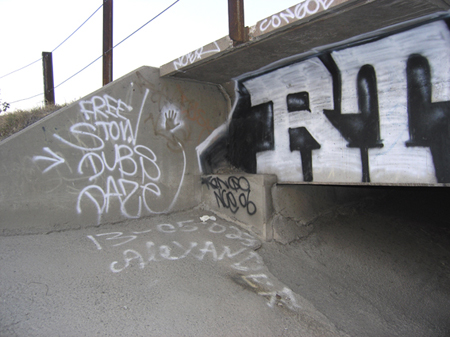
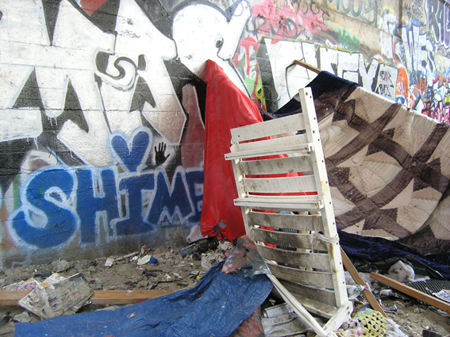
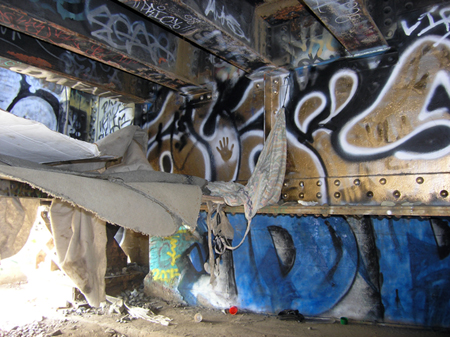
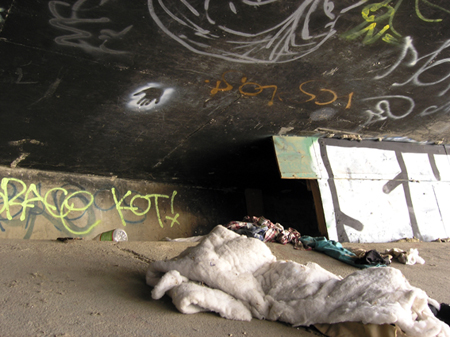
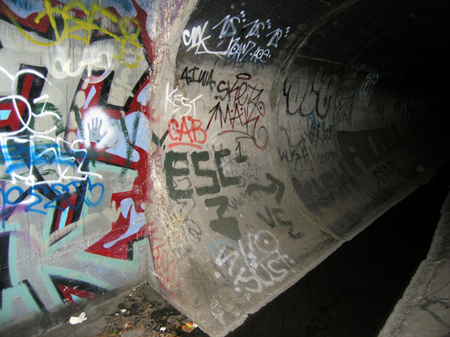
In his book, The Nature of Paleolithic Art, Dale Guthrie overturns many of the standard interpretations of the ancient cave paintings of the Paleolithic era. Among other things, Guthrie argues that many of the cave paintings were done by children and have similarities with present-day graffiti. Here is an illustration and short excerpt from the book:
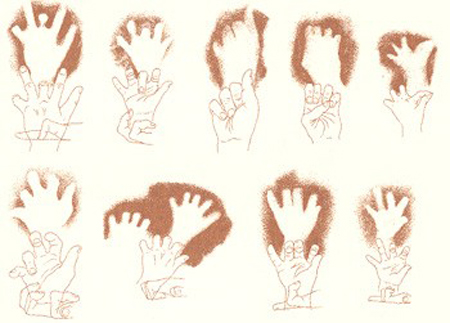
Missing Fingers in Art: Ritual, Disease, Frostbite, or Kids Playing?
“Many hand images in the French Gargas-Tibran cave complex and Cosquer and in Maltravieso Cave in Spain appear to have missing fingers or other malformations. These “disfigured” hands have fueled discussions for the last 100 years. Groenen (1987) has provided a review of this debate. The central issue, of course, is that virtually all apparent mutilations are also replicable by simply contorting fingers in the stenciled hand (as one does in shadow art). But many people still insist that these represent real ritual amputations. Meritking
“More recent speculation on possible causes of these disfigured hands has focused on Raynaud’s disease, in which capillaries fail to respond normally by flushing with warm blood when hands or feet get cold. I find this explanation unconvincing, because Raynaud’s disease is seldom expressed in young men (Larson 1996), and the hands with the “missing fingers” are mainly those of young males. Individuals who experience extreme winter temperatures, like cross-country dog-mushers, winter mountain climbers, and so on, do sometimes suffer frozen tissue. Yet, in Alaska, certainly among the coldest well-populated places on earth, complete loss of individual fingers due to freezing is rare. I have never seen one case. Nor have I seen any in my travels in northern Siberia. This is despite the fact that many residents in both places have had multiple experiences of frostbite.
“These Paleolithic images will, no doubt, continue to puzzle and prompt speculation. Having played with making spatter stencils of my own hands, I find the ease with which one can replicate the “maimed-hand look” has left me very convinced that all, or virtually all, were done in fun, especially when we recall that these are largely young people’s hands and appreciate the quick, almost careless, casualness with which they were made. This phenomenon of altering the hand stencil patterns by finger contortion is also well documented from a number of other cultures.”